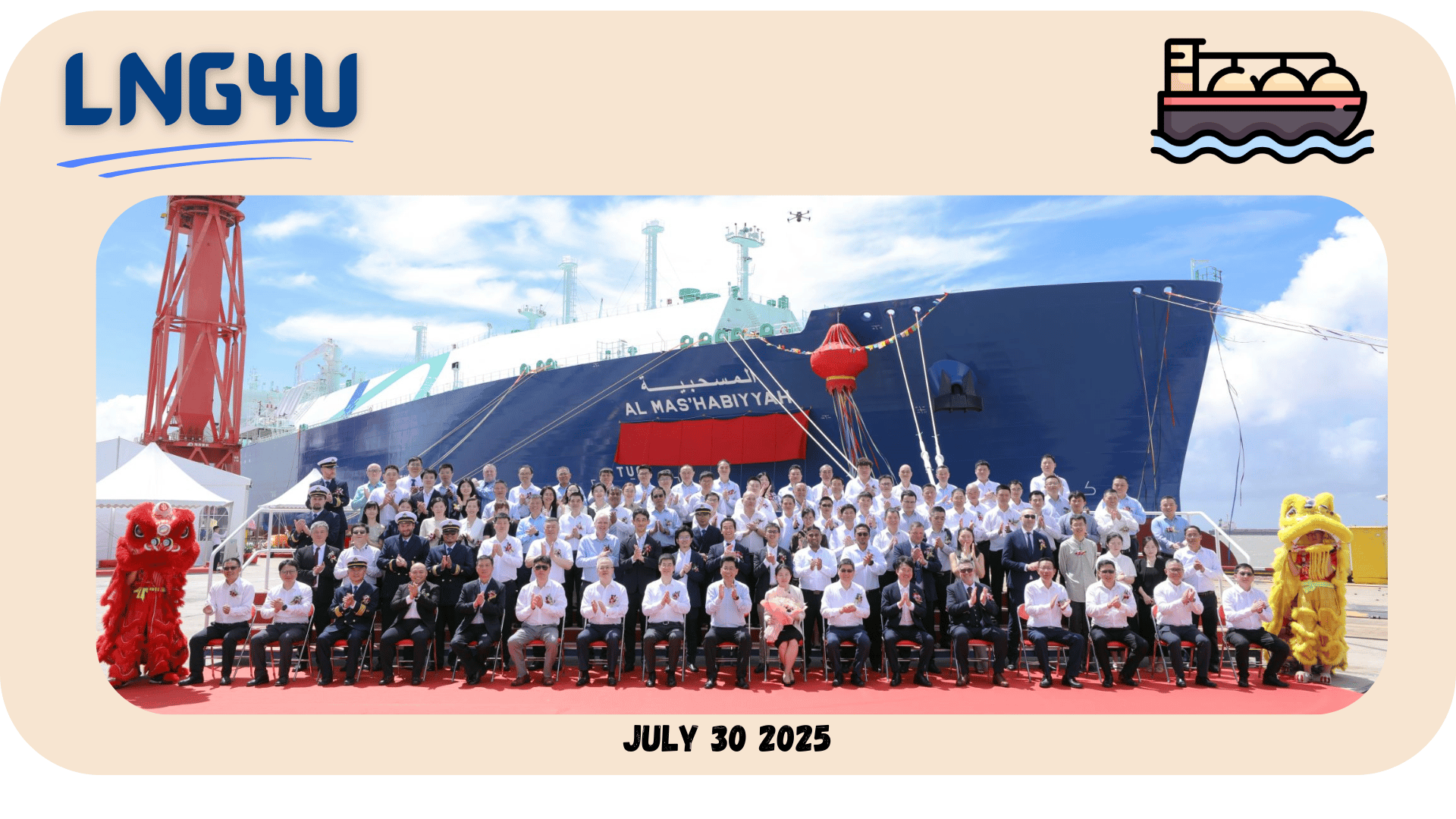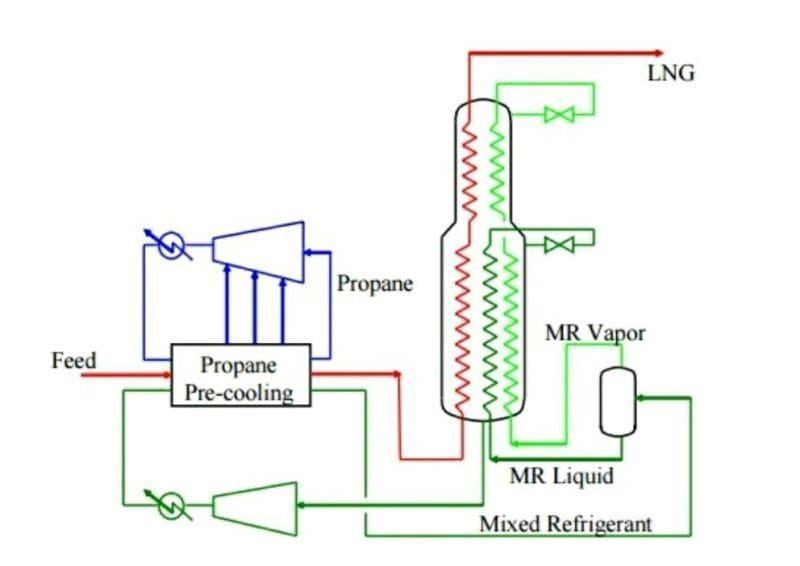
Welcome back to LNG4U — your insider look at the forces shaping the LNG market.
We lead with a crisp insight to keep you out front 🎓, then cut straight to the key stories, from price shifts 💰 to offshore moves that matter 🚢. Let’s dive in.
🎓 LNGKnowledge
How to liquify the Natural Gas and lower its temperature to -1️⃣6️⃣0️⃣ °C ❓
To lower the temperature of the Methane gas to its atmospheric boiling point, there are three 3️⃣ basic liquefaction processes in current use :
1️⃣ Pure Refrigerant Cascade process - In order to reach the low temperature required, three 3️⃣ stages are involved, each having its 👉 own refrigerant, #compressor and #hear exchangers. The first cooling stage utilises #propane, the second stage utilising #ethylene and, finally, a sub-cooling stage utilising #methane is involved.
The cascade process is used in plants commissioned before 1970.
2️⃣ Mixed Refrigerant process - Whereas with pure refrigerant process (as described above) a series of 👉 separate cycles are involved, with the mixed refrigerant process (usually methane, ethane, propane and nitrogen), the entire process is achieved in one 🥇 cycle.
The equipment is less complex 💡 than the pure refrigerant cascade process but power consumption is substantially greater and for this reason its use is not widespread.
3️⃣ Pre-cooled Mixed Refrigerant process - this process is generally known as the MCR process 👉 Multi-Component Refrigerant and is a combination of the pure refrigerant cascade and mixed refrigerant cycles.
It is by far the most common process in use today.

Source : Oil-gasportal


